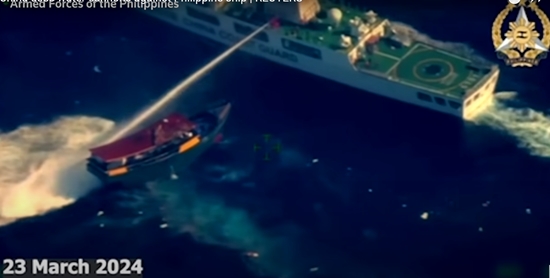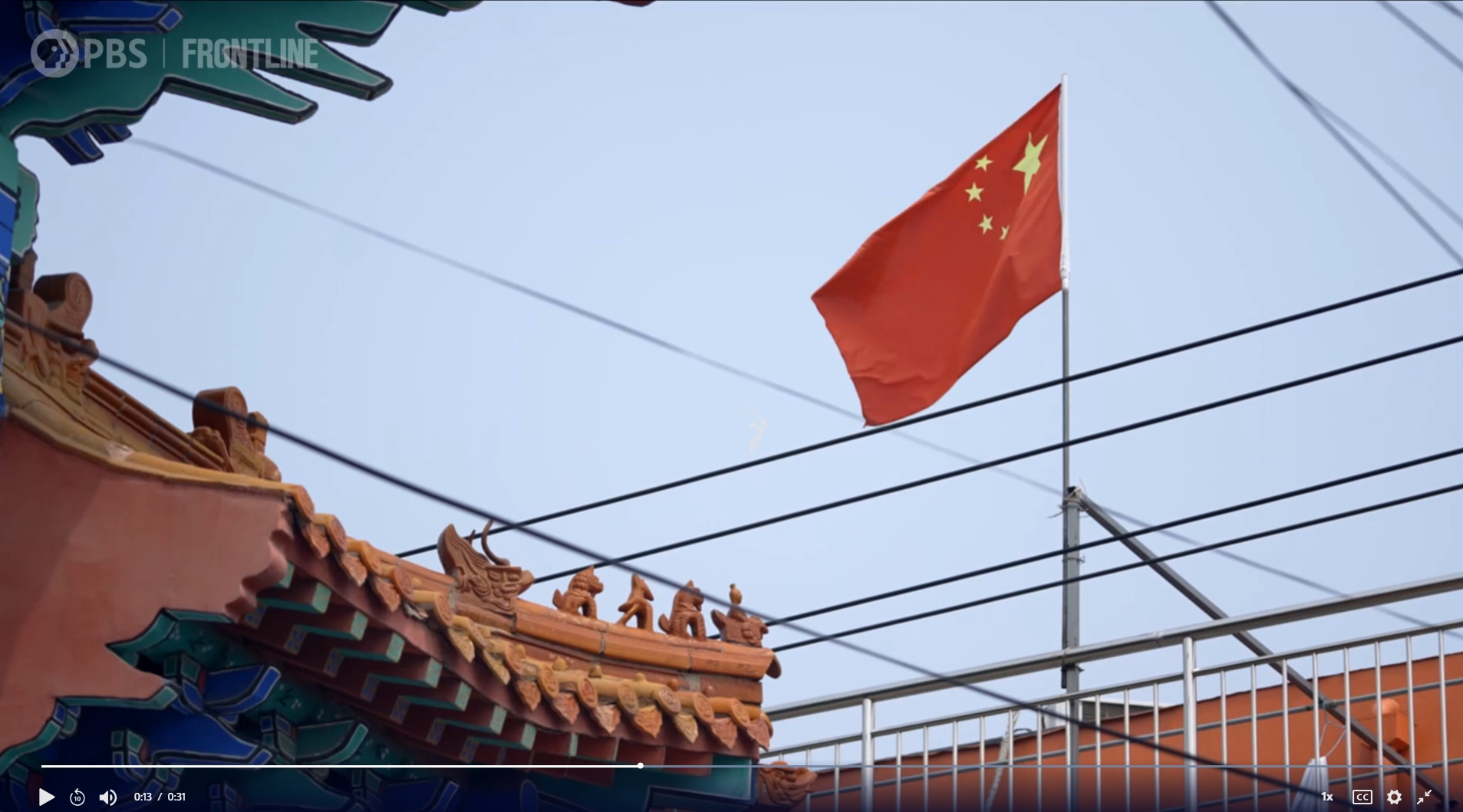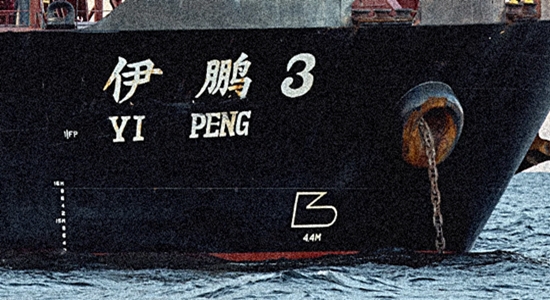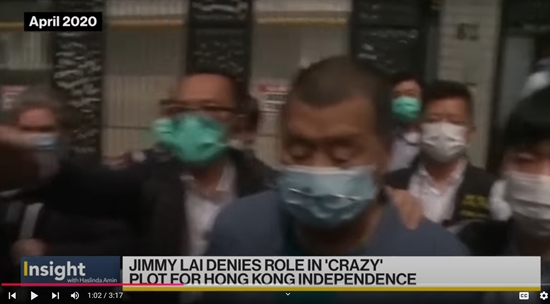
A Chinese water cannon damaged a Philippine supply boat in what Bill Gertz of The Washington Times calls “the most serious incident in weeks” in the long-running conflict between China and the Philippines over the Second Thomas Shoal (“Water cannon attack on Philippines navy boat raises odds of U.S.-China clash,” March 27, 2024).
The Philippine government uses an old navy ship that has run aground there as a military base and to assert its territorial rights in the area. China, which claims sovereignty over most of the South China Sea, including waters virtually lapping the shores of other countries, does its best to harass Philippine vessels.
The clash in the South China Sea took place Saturday, leaving a Philippine navy-operated supply boat heavily damaged….
People’s Liberation Army Sr. Col. Wu Qian, a spokesman for the Chinese Defense Ministry, said on Sunday that China’s military would take further action unless the Philippines halted resupplying the navy ship Sierra Madre on what is known as Second Thomas Shoal….
Earlier this month, the top U.S. commander in the Indo-Pacific warned that China has significantly increased “dangerous” and aggressive activities against the Philippines near the shoal. Adm. John Aquilino said in congressional testimony that the aggression is increasing the prospect of U.S. military intervention in the standoff, given the defense treaty the U.S. has with the Philippines….
“And the fact is that they are now fire-hosing and ramming Philippine ships attempting to support Philippine sailors on the Sierra Madre. … If a sailor or soldier or one of their members were killed, [the Philippine government] could invoke Article 5 of the Mutual Defense Treaty, and that would put our policy decision makers in a place that would require really tough choices.”
If China kills somebody by firing a weapon at a Philippine vessel, this won’t be an accident, even if Chinese spokesmen blandly assert that their navy men didn’t mean to hurt anybody. Such an event does sound as if it would be a tipping point. But tipping toward what? Then what happens? In response to the recent aggression, the Philippine government issued its “strongest protest” so far. Is the next step a really, really strong protest?
“Really tough choices” sounds like a reference to a military response more serious than protests or even than returning Chinese water-cannon fire with Philippine water-cannon fire—which latter, so far as I can learn, has yet to happen. The Philippine supply boats going to the Shoal do not generally seem to be accompanied by Philippine naval ships equipped with water cannons. Sometimes there is a sort of escort. In August 2023, two Philippine supply boats “breached a Chinese coast guard blockade” as a U.S. plane circled overhead.
The current Philippine government has been more vocal and public in its protests against Chinese aggression than was the last Philippine government. But we don’t know how far Manila or the United States is willing to go to oppose Chinese aggression in the area. One hopes that the tough choices about what to do if worse comes to worst are already being made.
China will keep pushing to see how far it can go without going to war. She may retreat—for a moment—if an adversary shows signs of fighting back. On the other hand, having exhausted all “peaceful” gambits, China may roll the dice and wage open war. Even the longest long game doesn’t last forever.
Also see:
StopTheChinazis.org: “Japan to the Rescue in the South China Sea?”
“While the United States is playing a military role, using naval transit to enforce freedom of the seas, Japan is helping China’s neighbors to build cases about Chinese aggression.”





